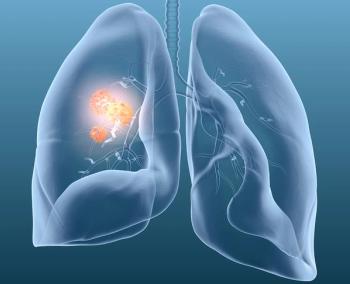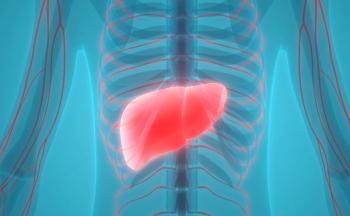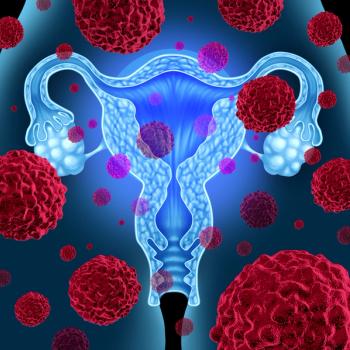
FDA Accepts New Drug Application for 177Lu-Edotreotide in GEP-NETs
Results from the phase 3 COMPETE trial demonstrated that 177Lu-edotreotide improved PFS and ORR compared with everolimus in patients with GEP-NETs.
The FDA has accepted the new drug application (NDA) for n.c.a 177Lu-edotreotide (ITM-11 or 177Lu-edotreotide)—a proprietary, synthetic, targeted investigational radiotherapeutic agent—as a treatment for patients with gastroenteropancreatic neuroendocrine tumors (GEP-NETs), according to a press release from the developer, ITM Isotope Technologies Munich SE.1 The FDA has set a Prescription Drug User Fee Act goal date of August 28, 2026.
The NDA submission was supported by data from the phase 3 COMPETE study (NCT03049189), which evaluated the efficacy and safety of first- or second-line treatment with 177Lu-edotreotide vs molecular therapy with everolimus (Afinitor) in patients with inoperable, progressive, somatostatin receptor (SSTR)–positive GEP-NETs. Topline results from the trial were shared at the 22nd Annual Neuroendocrine Tumor Society (ENETS) 2025 Conference and published in a press release from the developer in March 2025.2
The median progression-free survival (PFS) was 23.9 months with 177Lu-edotreotide compared with 14.1 months with everolimus, demonstrating a statistically significant improvement with the experimental treatment (HR, 0.67; 95% CI, 0.48-0.95; P = .022).
The interim median overall survival was 63.4 months with 177Lu-edotreotide compared with 58.7 months with everolimus, demonstrating numerically higher values that were not conclusive for significance (HR 0.78; 95% CI, 0.5-1.1; P = .206).
Regarding safety, treatment-emergent adverse events (TEAEs) related to study medication occurred in 82.5% of patients who received 177Lu-edotreotide compared with 97.0% of patients who received everolimus. Notably, 1 grade 2 serious TEAE of myelodysplastic syndrome was reported, and no unforeseen TEAEs occurred.
Additional results from the trial were shared at the
The overall response rate (ORR) per central assessment was 21.9% with 177Lu-edotreotide vs 4.2% with everolimus (P <.0001); per local assessment, the ORR was 30.5% vs 8.4%, respectively (P <.0001).
Subgroup analysis by primary tumor origin showed that patients with gastroenteric NETs had a median PFS of 23.9 months with 177Lu-edotreotide vs 12.0 months with everolimus (HR, 0.64; 95% CI, 0.38-1.08; P = .090); the median PFS for patients with pancreatic NETs was 24.5 months vs 14.7 months (HR, 0.70; 95% CI, 0.45-1.09; P = .114). In patients with grade 1 tumors, the median PFS was 30.0 months vs 23.7 months, respectively (HR, 0.89; 95% CI, 0.42-1.87; P = .753), and in those with grade 2 tumors, the median PFS was 21.7 months vs 9.2 months (HR, 0.55; 95% CI, 0.37-0.82; P = .003). In patients in the first line of treatment, the median PFS was not reached compared with 18.1 months (HR, 0.60; 95% CI, 0.25-1.45; P = .249); in those in the second line of treatment, the median PFS was 23.9 months vs 14.1 months (HR, 0.68; 95% CI, 0.47-0.98; P = .039).
Regarding safety, the frequency of trial discontinuations related to TEAEs was 1.8% with 177Lu-edotreotide vs 15.2% with everolimus.
“The FDA’s acceptance of our NDA is an important regulatory milestone in advancing this new radiopharmaceutical treatment option for patients with GEP-NETs,” stated Celine Wilke, MD, chief medical officer of ITM, in the press release.1 “In the phase 3 COMPETE trial, 177Lu-edotreotide demonstrated extended PFS, a straightforward dosing regimen, and a favorable safety profile, supporting its potential to improve the current treatment paradigm. We look forward to working closely with the FDA toward potential approval.”
A total of 309 patients with inoperable, progressive, grade 1 or grade 2 SSTR-positive NETs of gastroenteric or pancreatic origin were enrolled in COMPETE. Patients were randomly assigned, in a 2:1 ratio, to receive up to 4 cycles of 7.5 GBq of 177Lu-edotreotide with a nephroprotective amino acid solution every 3 months (n = 207), or 10 mg of oral everolimus daily for up to 30 months (n = 102).
The primary end point of the trial was PFS. Secondary end points included ORR and OS.
“This milestone reflects more than 20 years of leadership and dedication to advancing the radiopharmaceutical field, built on our global isotope manufacturing, clinical expertise, and pipeline of targeted therapeutics and diagnostics,” Andrew Cavey, MD, chief executive officer of ITM, added in the release.1 “Above all, we are driven by a single focus: making a real difference for people living with hard-to-treat cancers.”
References
- ITM announces FDA acceptance of new drug application (NDA) and PDUFA date for n.c.a. 177Lu-edotreotide (ITM-11) in gastroenteropancreatic neuroendocrine tumors (GEP-NETs). News release. ITM Isotope Technologies Munich SE. November 13, 2025. Accessed November 14, 2025. https://tinyurl.com/2zvjxy6s
- ITM presents positive topline phase 3 COMPETE trial data with n.c.a. 177Lu-edotreotide (ITM-11), a targeted radiopharmaceutical therapy, in patients with grade 1 or 2 gastroenteropancreatic neuroendocrine tumors at the ENETS 2025 conference. News release. ITM Isotope Technologies Munich SE. March 6, 2025. Accessed November 14, 2025. https://tinyurl.com/37a6k7kb
- ITM announces phase 3 COMPETE data demonstrating a statistically significant higher objective response rate with n.c.a. 177Lu-edotreotide (ITM-11) vs. everolimus in patients with gastroenteropancreatic neuroendocrine tumors at ESMO 2025. News release. ITM Isotope Technologies Munich SE. October 18, 2025. Accessed November 14, 2025. https://tinyurl.com/3jm7kr5w
Newsletter
Stay up to date on recent advances in the multidisciplinary approach to cancer.






















































































